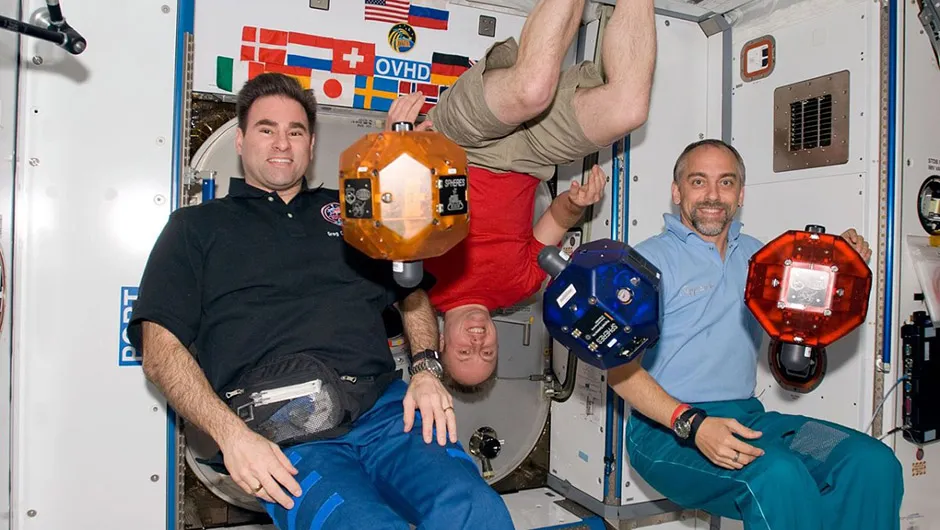UK astronaut Tim Peake tweeted an intriguing picture of himself a few weeks ago, of him floating in the cupola of the International Space Station.
Despite the iridescent beauty of the world behind him, Peake is engrossed in a dog-eared book – Road to the Stars by Yuri Gagarin, the first man to fly in space.
But it’s not the books first trip to space, however.
It flew with the first Briton in space, Helen Sharman, on board her flight in 1991.
Peake shared the image on 12 April, 55 years since Yuri Gagarin’s flight and just shy of the 25th anniversary of Sharman’s trip to space station Mir.
Last autumn, Peake asked Sharman for something he could take on his mission.
“He wanted to make that link,” Sharman told The Guardian, “between me, the first Brit in space, and himself, the second.”
And the book was the obvious choice.

Astronaut Wanted
Britain’s love affair with space saw it become the sixth nation to fly a satellite – tiny Prospero in 1971.
But the nation decided to place an emphasis on satellite communications and remote sensing, shying away from crewed missions.
Test pilot Nigel Wood might have flown on the Space Shuttle in 1986, but his mission was cancelled after the Challenger disaster.
Then, in mid-1989, a nationwide campaign of billboards, newspaper ads and radio announcements proclaimed Astronaut Wanted: No Experience Necessary.
Public interest was piqued in ‘Project Juno’, a commercial venture to send a Briton to space station Mir funded by corporate sponsorship.
For Sheffield-born Helen Sharman, then a 26-year-old chemist at the Mars chocolate firm, the news came on her car radio as she sat in a traffic jam.
In her autobiography, she described this “rarest of moments” as she joined 13,000 hopefuls, scarcely imagining that before her 28th birthday she would have flown into space.
Juno’s sponsorship fell embarrassingly short of its mandated level, but was saved at the eleventh hour by Moscow Norodny Bank and, it is said, by personal intervention from Mikhail Gorbachev, General Secretary of the Soviet Union.
Matters were worsened by the mission’s questionable scientific merit.
But the mission managed to proceed and Sharman launched atop a Union Jack-emblazoned rocket on 18 May 1991, shoulder-to-shoulder with two Soviet cosmonauts.
Aboard Mir, she took blood samples, monitored her mental co-ordination and tracked her heart rate.
She grew wheat seedlings and potato roots, carried thousands of pansy seeds for British schoolchildren and photographed the British Isles. She returned a national heroine on 26 May.
Over the next two decades five other British citizens would fly in space 13 times, but like Sharman not one of them was received any formal sponsorship from the UK government.

The forgotten Brits
They included software entrepreneur Mark Shuttleworth and videogame developer Richard Garriott, who flew to the ISS as paying ‘tourists’.
The others held dual US citizenship, meaning they were eligible to apply for NASA’s astronaut corps.
Lincolnshire-born Mike Foale flew six times between 1992 and 2004, accruing 374 days in space and 23 hours spacewalking outside the shuttle, Mir, the Hubble Space Telescope and the ISS.
He repaired Mir after a near-catastrophic collision and toiled to replace Hubble’s computer, two days before Christmas in 1999.
By the end of his career, he topped the list as the most experienced U.S. astronaut, a position he held until 2008.
On each flight, Foale wore the Stars and Stripes on his space suit.
So too did Sussex-born meteorologist Piers Sellers and engineer Nick Patrick, who hails from Saltburn-by-the-Sea, in the Tees Valley.
Sellers flew the shuttle three times, and Patrick twice, and they spent 60 hours working outside the ISS on nine spacewalks.
They helped build its huge truss, added its Tranquility module and cupola and delivered supplies to a station which today is called home by one of their countrymen.
With the UK having made significant financial inputs into the European Space Agency in recent years, Chichester-born Tim Peake has gone from being a ‘British-born European astronaut’ to a fully-fledged ‘British astronaut’.
Since his launch last 15 December, he has supported ISS research, honoured the Queen’s 90th birthday and St. George’s Day from orbit, performed a spacewalk—with a Union Jack on his sleeve—and run the 26-mile London Marathon on the station’s treadmill.
For Peake, the end of his mission is in sight.
And when he returns home on 18 June, Road to the Stars will return with him. Its destination remains unclear.
But hopefully it will not be too long before another ‘British’ astronaut picks it up and takes it back into space.
